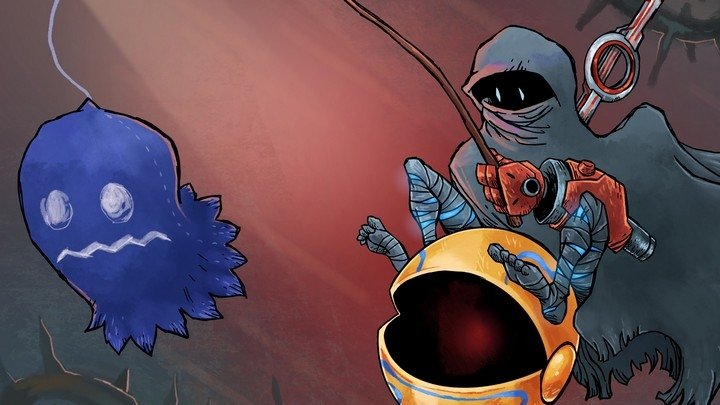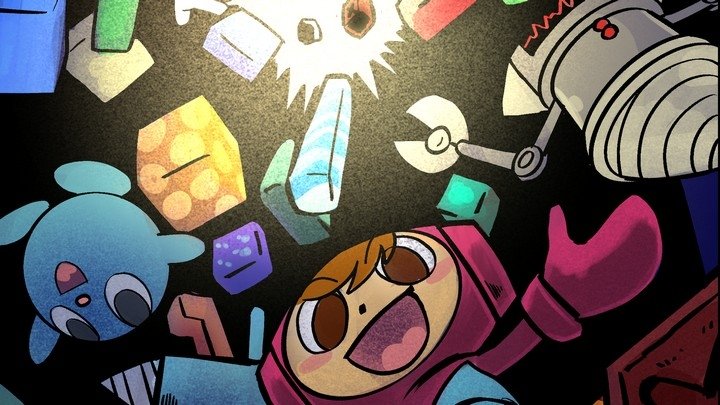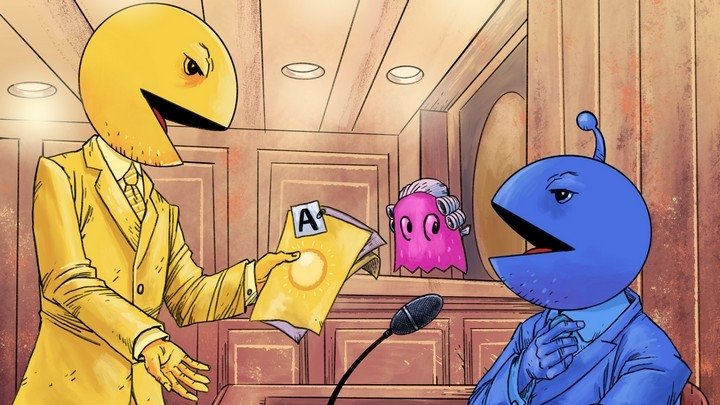Decade of despair: Order of Ecclesia and the death of Castlevania
It's been a decade since the last IGAvania adventure came out. RIP.
It was ten years ago, on a night just like tonight, that Castlevania died.
Castlevania: Order of Ecclesia was released on October 23, 2008 to positive reviews. It was the third Castlevania game on the Nintendo DS and the sixth handheld Castlevania released in seven years, nearly all of which were produced by Koji Igarashi. Igarashi's name was so closely associated with the series that his games, known for their exploration and mixture of RPG-elements with platforming action, were nicknamed "IGAvanias" by fans (I guess some people also call them Metroidvanias?).
Even at a glance, Order of Ecclesia looks very different than previous Castlevania titles thanks to its hero, Shanoa. Most games in the series starred men from the Belmont clan who wielded a whip in their family's long struggle against Count Dracula. Even when Castlevania diverged from that pattern, the heroes remained men and the women were stuck in support roles, often as damsels in distress who only aid the hero (or become playable as a secondary character) once they are rescued.
Shanoa is not a supporting character. She is never kidnapped. She doesn't use a whip. Instead, she's got a badass magic tattoo on her back and she wields "glyphs" to battle evil. These glyphs can manifest as simple weapons like swords or hammers but they can also be powerful spells. Shanoa can even interrupt enemies and "steal" their abilities mid-use, adding their powers to her own. This means that all Shanoa's attacks are magic, so her on-screen magic bar depletes with every strike, though it refills quickly if she rests for just a moment. Contrast that with past Castlevanias where magic powers and subweapons had limited uses and were meant to supplement a main weapon. Shanoa doesn't carry a main weapon because she is the main weapon.
Beyond its hero, Order of Ecclesia takes place in a world unlike other Castlevania games at the time as it drops the IGAvania structure of a single environment - usually Dracula's castle - where the entire game takes place. Instead, Order of Ecclesia is composed of separate, smaller stages that the player selects from a map screen. Reaching the exit in a level unlocks a new location on the map. It's not quite linear as Shanoa can revisit any stage at any time (some of which have multiple exits which spawn new map destinations), but with no connectivity between the game's levels the brooding sense of place and character that looms over other Castlevania games is missing.
On the other hand, by not tying the entire game to a single castle, Order of Ecclesia is free to feature a variety of environments that would not otherwise make sense inside of Dracula's lair. Mountains, forests, lighthouses, and swamps are only a few of the places Shanoa must battle monsters. There's even a town with villagers to chat with, all of whom must be rescued from around the game world before they can aid Shanoa on her quest. In these ways Order of Ecclesia resembles Castlevania II: Simon's Quest, the very first Castlevania game to feature non-linear design and depict the hardships of life outside of the eponymous castle. At least in Order of Ecclesia the villagers don't offer vague or misleading hints; they're on your side and they'll reward you if you fulfill their various requests.
It is perhaps fitting that Castlevania: Order of Ecclesia depicts a bleak and tortured world for the player to struggle against as it is the hardest IGAvania game of them all. The very first skeleton Shanoa encounters in the game requires three strikes to defeat instead of just one. Late-game enemies are capable of dealing tremendous damage just by bumping into Shanoa. Full-health potions are extraordinarily expensive, and Shanoa can only carry 9 regular potions, limiting her ability to heal her wounds mid-battle. The game leans into this difficulty by including two challenge levels unlocked late in the story: one is a complex obstacle course that requires precise movement to clear, the other is a series of caves stuffed with powerful, often unique, foes that must be slain before the next chamber opens. It is possible to complete the main story without clearing these areas, but the rewards contained within go a long way towards making Shanoa stronger.
So why did the release of Castlevania: Order of Ecclesia mark the death of Castlevania? For one thing, it would be the last IGAvania game; Konami would continue to produce Castlevania games for years but the genre would vary wildly from title to title, from a fighting game to a first-person arcade game and even a mobile puzzle game. Koji Igarashi would remain at Konami for several more years trying to get another IGAvania off the ground but it never came to be and he would resign from the gaming giant in 2014.
Another factor was the perceived failure of the series to keep up with the times. The IGAvania games were always viewed internally as secondary releases at best: Symphony of the Night wasn't supposed to be the prestige next-generation Castlevania game, the 3D Nintendo 64 game was. Konami would continued to make 3D Castlevania games for home consoles while relegating 2D IGAvanias to handheld consoles. 2008 was the year of Grand Theft Auto IV and Left4Dead. HD graphics and online multiplayer was in; single-player games made with sprites were seen as yesterday's news. It's no coincidence that the last hurrah for 2D Castlevania was Harmony of Despair (HD, get it?), a 2010 multiplayer game for Xbox 360 and PlayStation 3 that recycled characters and art from the IGAvania era as a series of widescreen arenas.
However, something else happened in 2008: Braid was released for Xbox Live Arcade, ushering in a newfound appreciation for digitally-distributed video games made by smaller teams. Indie developers took notice of the void left by Castlevania (and Metroid) and began creating games that took a lot of inspiration from those two series which had fallen silent. They may not feature any men named Belmont (or bounty hunters named Samus) but fans of classic IGAvania games have an absolute glut of options at the present. Retronauts kingpin Jeremy Parish crafted a list of the best indie Metroidvanias made since Order of Ecclesia was released; nearly all of them came out in the last two years and are available on the Nintendo Switch. Seeing all those games in a row makes the death of Castlevania sting a little bit less.
...and yet, just as Dracula periodically rises from his grave, Castlevania refuses to go quietly. A bundle of Symphony of the Night and Rondo of Blood is scheduled to be released on PlayStation 4 this week just as season two of the Castlevania anime is released on Netflix. Simon and Richter Belmont will be playable characters in the next Smash Bros game. Koji Igarashi left Konami to create his own IGAvania IP called Bloodstained starring a woman who looks a lot like Shanoa; the new game has been delayed until 2019 but he produced a 2D retro spin-off called Curse of the Moon earlier this year to much acclaim. While not a IGAvania it looks and plays a lot like Castlevania III with multiple characters and alternate paths through stages that rewarded replay and experimentation.
So tonight we mark ten years since Castlevania, the hugely innovative and influencial video game series, died.
Long live Castlevania.




